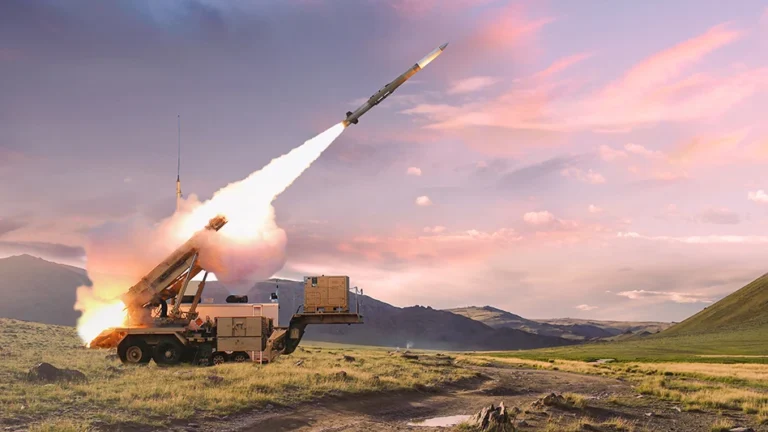
STMicroelectronics at IAA Mobility 2025: Driving the Transformation of the Automotive Industry
At the IAA Mobility 2025 conference, the President and CEO of STMicroelectronics (ST) delivered a keynote address that captured both the challenges and opportunities facing the global automotive industry. His remarks centered on the sweeping transformation reshaping the sector and the pivotal role semiconductor companies like ST must play in ensuring its success.
The automotive industry is experiencing the most profound transformation in its history. This shift is not limited to how vehicles are designed and manufactured but extends to the entire market environment, which has grown increasingly complex due to trade disputes, tariff barriers, and a new dynamic between automakers and semiconductor providers.
Two forces in particular stand out as the primary drivers of this revolution. The first is the shift to e-mobility, led by the rapid adoption of battery-electric and hybrid vehicles. The second is the rise of the software-defined vehicle, which reimagines the role of hardware, software, and semiconductors in mobility.
Battery-electric and hybrid vehicles are expected to become the majority of light vehicles sold globally by the end of the decade. This shift, however, depends on vehicles being affordable, user-friendly, and safe enough to win widespread consumer trust. At the same time, the software-defined vehicle requires a complete redesign of how cars are conceived, where semiconductors become the central enablers of safety, connectivity, and performance.
The changing market landscape also reflects shifting global dynamics. China, once seen as just one important market, is now a strategic force that influences innovation, value chains, and global sales. This development raises important questions for Europe’s competitiveness as new ecosystems take shape.
STMicroelectronics’ Role
As a leading integrated device manufacturer (IDM), STMicroelectronics has positioned itself as a vital player in this transformation. The company sees its mission in three key areas:
- Delivering valuable technologies that provide measurable benefits to automakers and end users.
- Building end-to-end partnerships across the entire value chain, moving beyond the old transactional supplier model.
- Strengthening supply chain resilience in a world where tariffs, trade frictions, and geopolitical uncertainties are increasingly common.
Innovation at the Core
Innovation lies at the heart of ST’s contribution, and the CEO highlighted three important areas where the company is making a difference.
1. Sensors and Intelligent Monitoring
Modern vehicles rely on a massive array of sensors that generate vast amounts of data. MEMS sensors, for instance, detect motion, acceleration, vibration, temperature, and environmental conditions. Increasingly, these sensors integrate artificial intelligence to enable real-time responses inside vehicles. ST has recently taken a bold step by proposing the acquisition of NXP’s MEMS business, further strengthening its leadership in this space. Another critical application is driver and occupant monitoring, which helps improve safety by detecting distraction or fatigue.
2. Power Electronics for Electrification
Power electronics are fundamental to electric mobility. Using advanced materials such as silicon carbide (SiC) and gallium nitride (GaN), ST is enabling longer vehicle ranges, lower power consumption, and a smaller carbon footprint. These technologies could soon make it possible to achieve charging speeds of 1–2 kilometers of range per second, provided the infrastructure is ready. ST’s portfolio includes silicon carbide MOSFETs, GaN devices, IGBTs, and high- and low-voltage MOSFETs, all designed to optimize vehicle efficiency and performance.
3. Embedded Processing for Software-Defined Vehicles
The software-defined vehicle requires new architectures supported by advanced microcontrollers and processors. ST focuses on scalable solutions, such as zonal architectures with customizable memory and built-in AI capabilities. These microcontrollers can be updated over-the-air, allowing vehicles to evolve and adapt long after leaving the factory.
Through innovations in sensing, power electronics, and processing, ST is equipping automakers with the tools they need to succeed in this new era.
A New Collaboration Model
The relationship between automakers and semiconductor suppliers has fundamentally changed. A decade ago, semiconductors were introduced late in the vehicle development process, with specifications passed down through multiple supplier tiers. That model is no longer sustainable.
Today, many systems require direct collaboration between automakers and semiconductor companies to ensure optimal performance, affordability, and efficiency. Without this level of cooperation, the industry risks falling behind global competitors, particularly in China. ST’s IDM model—where design, technology, and manufacturing are integrated—positions the company as a strong partner for the automotive industry in this new era.
Manufacturing and Supply Chain Strategy
ST has built a supply chain designed for resilience and flexibility. Its European manufacturing network is organized into specialized clusters: embedded processing in France, analog and MEMS sensors in northern Italy, power technologies in southern Italy, and high-volume production in Singapore.
Years ago, ST expanded into China not simply to reduce costs but to engage directly with one of the fastest-moving innovation ecosystems in the world. Its “China for China” strategy ensures that technology designed and manufactured in China stays in China, while its European footprint serves global markets. This dual approach provides customers with reliable supply and innovation at speed, while also safeguarding against trade disruptions




